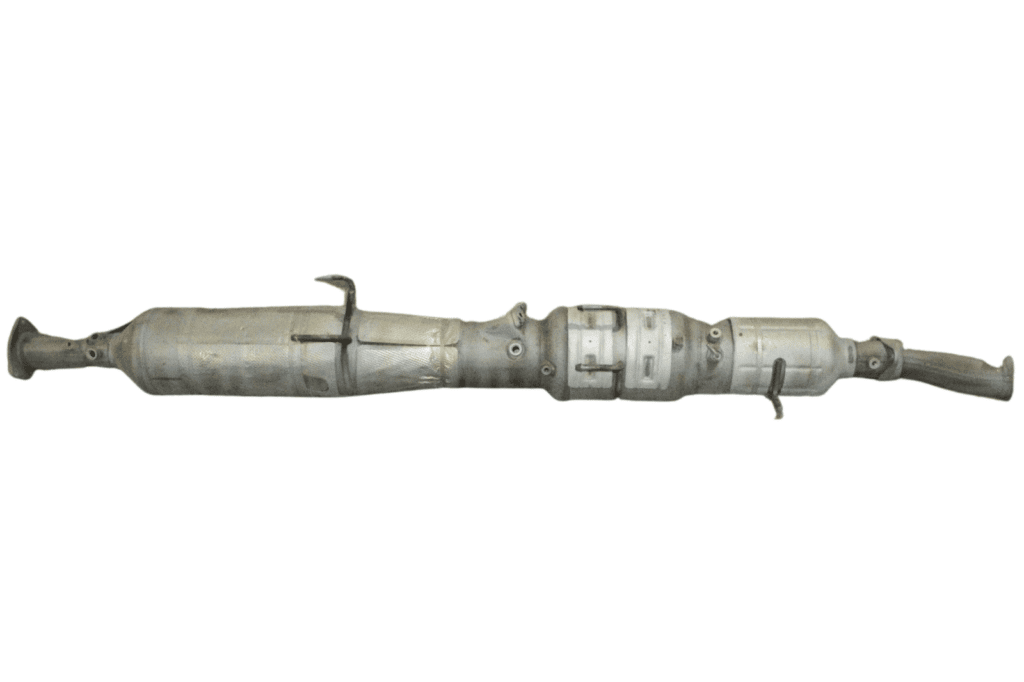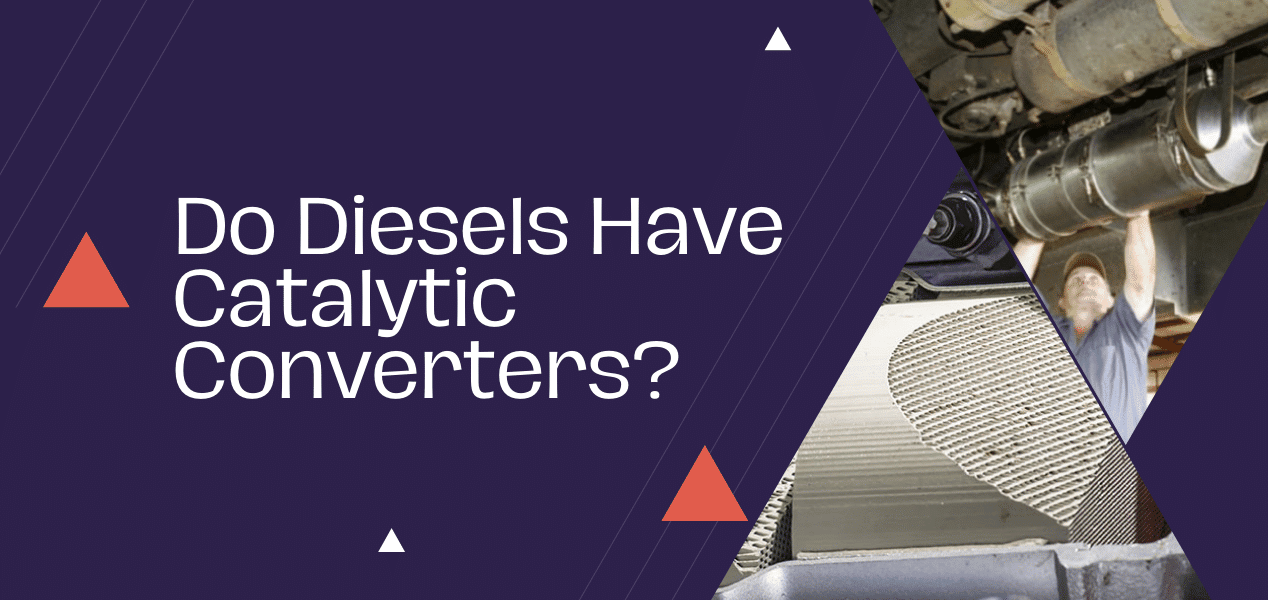With pollution levels rising at a significantly higher rate, many governments have made them a must. And due to the strict regulations, car manufacturers have started to integrate catalytic converters for a while. But is the case the same for diesel cars? Do diesels have catalytic converters?
Yes! The diesel vehicles that are from 2007 and later have catalytic converters. And they have this component to meet specific emission limits. But what do the catalytic converters do? Also, how does the diesel catalytic converter work?
Well, you can get to know all about diesel catalytic converters through this discussion. We will discuss every detail you should know about diesel catalytic converters.
Do Diesel Vehicles Have Catalytic Converters?
Yes! Diesel vehicles from 2007 and later have catalytic converters. They are required to have this component to meet specific emission limits.
What Are Diesel Catalytic Converters?

At its core, the catalytic converter is an essential vehicle component. It is a part of the exhaust mechanism, and its main task is to convert pollutant gases. But what does it convert the exhaust gases to? It utilizes a catalyst to make the toxic gases less harmful.
The story is pretty much the same for the diesel catalytic converters. They reduce the intensity of harmful gases and make the exhaust fumes less toxic to the environment. However, the diesel exhaust will have a diesel oxidation catalyst.
That component of the diesel exhaust transforms the carbon monoxide into carbon dioxide. Along with converting carbon monoxide, the exhaust system will also break down leftover fuel.
Basically, the diesel oxidation catalyst will function like a gas system catalytic converter.
How Does A Diesel Catalytic Converter Work?
In case it was not clear from the segment above, diesel cars have a different type of catalytic converter. And the great thing about the diesel converter is that it is not just a pollution filter. It also acts as an exhaust gas re-arranger for diesel cars. Now, what exactly do we mean by that?
Well, it rearranges the atoms! It will transform the chemical nature of the gases that exit from the exhaust system. Nonetheless, the process of diesel catalytic converter mainly happens in four stages. Let’s walk you through those stages to give you a better idea about the catalytic converters that are generally for a diesel engine.
Exhaust Gas Recirculation (EGR)
Among all the harmful gases that diesel cars exhaust, nitrogen is one of them. And the thing about nitrogen is that it is an inert gas, which means it does not change in normal conditions. So, the gas must go through an extreme heat level to become reactive.
The basic functionality of Exhaust Gas Recirculation is that it allows exhaust fumes to recirculate back into the system. However, it only lets in a very measured and precise amount of gas. That eventually allows the gasses to be at a point where they are not too little or too much.
Furthermore, this part of catalytic converters will keep the temperature down. That is how the nitrogen gas stays in its inert state throughout the entire process.
You should also note that nitrogen is harmless for humans. The air that we breathe is about 80 percent of nitrogen. And the nitrogen that EGR will let out from the exhaust manifold will be as harmless as the one that is present in the air.
Diesel Oxidation Catalyst (DOC)
Another part of the diesel engine catalytic converters is the Diesel Oxidation Catalyst. And the process of this part is pretty close to the catalytic converter you will find in a gas-powered vehicle. Similar to a gas catalytic converter, the DOC converts carbon monoxide into carbon dioxide.
Alongside that, it will deal with any leftover fuel by decomposing it. Although DOC is the smallest component in the diesel converter system, it is generally the first part of the catalytic converters for diesel engines. And as it has “oxidation” in its name, you can probably guess how this component covert the CO to CO2.
However, this component of a diesel vehicle is not only for CO. It also takes care of hydrocarbons, aldehydes, and diesel particulates. They will all oxidize to a nontoxic level before they exit the catalytic converters.
Diesel Particulate Filter (DPF)
The diesel engine creates a polluting by-product that is not present in the internal combustion engine. This by-product is usually referred to as soot or particulates. And the Diesel Particulate Filter takes care of the by-product of gasoline engines. It uses a wall-flow monolith that has alternating open-and-closed channels.
Those channels capture the particles from the inlet side. After capturing the pollutant from the diesel system, the channels will keep diesel particulate trapped until they are broken down.
After the diesel particulate is broken down, the “regeneration” process removes them from the diesel system. Again, this process is not present in internal combustion engines. Now, what does the regeneration process does? It is pretty similar to the oxidation process of DOC.
In other words, the regeneration process of the diesel engines will carry out a burning process, which will burn the organic material to water and CO2.
The DPF will also come with small amounts of palladium and platinum. Those are there to help the catalysis process. The soot will also require extreme heat, which will let it burn up. After burning up, it will get out of the catalytic converters through the filter walls and tailpipe.
Selective Catalytic Reduction (SCR)
This component of diesel engines takes care of the nitrogen oxides. Usually, gas engines will have Rhodium, which is a rare metal that aids the reduction process. The reduction process happens in a three-way converter, which converts the nitrogen oxide gases to their individual molecules, oxygen and nitrogen.
However, as the exhaust of diesel-powered vehicles has a high level of oxygen, the rare metal can not effectively reduce the nitric oxides inside the diesel converter. That is why the exhaust system of diesel engines will not have Rhodium.
Instead, the Selective Catalytic Reduction will utilize a chemical, which is “diesel exhaust fluid.” Generally, it will be of urea or ammonia. The ceramic monolith still includes the catalytic materials; however, usually, they are not recyclable. And even though it is not recyclable, it effectively takes care of nitrogen oxides.
Moreover, you will find a small amount of platinum on the SCR catalyst, also called “ammonia slip catalyst.” The goal of this catalyst is to eliminate excess ammonia from the entire system. And the amount of platinum is so small that it is not even worth recycling.
Another way to decrease the nitric oxides from diesel engines is through EGR, which we discussed earlier. It is present in some of the diesel engine emissions systems.
How Long Do The Diesel Catalytic Converters Last?
The lifespan of these will vary. On average, these converters will last for ten years or 100 thousand miles. However, the lifespan will highly depend on the number and duration of the vehicle’s stops. When the car makes very brief start-stop journeys, the catalytic converter will wear out faster than the usual rate.
On that note, you should know that the engine turns off before the catalytic converter gets to the optimal temperature range on such journeys as mentioned above. That is why they can not fully perform all the catalytic reactions. Also, a high-end catalytic converter will last longer than the others.
For that reason, when you are purchasing diesel converters, you need to consider the overall efficiency, performance, and durability. Furthermore, remember that despite the lifespan of the diesel catalyst system, you should get it inspected regularly. Check for both internal and external damages during those inspections.
What Are The Signs of A Failing Catalytic Converter?
A variety of reasons can make a catalytic converter fail. That includes high carbon deposits and carbon buildup. These will restrict the free flow of the gas, which will make the parts of the catalytic converter not work optimally. However, there can be external reasons as well.
For example, excessive heating, unusual wear, and physical damage can make the catalytic converter fail earlier than it should. Nonetheless, when it comes to symptoms, they will vary from one to another. The symptoms of a failing catalytic convert will depend on the type of converter of the diesel engines.
However, the common symptoms of a failing catalytic converter for diesel and gas engines are:
- Dark smoke spewing from the exhaust
- Vehicle overheating
- Smell of rotten eggs coming from the exhaust
- Poor engine performance
- Acceleration issues
On that note, the modern diesel catalytic converter will pair up with oxygen sensors. These indicators will light up when the diesel catalytic converter is not working properly. And when they light up, you should get the vehicle checked up by a professional.
Final Words
So, do diesels have catalytic converters? Well, not all diesel vehicles will come with a catalytic converter. However, the ones that came out in 2007 and later will have one.

